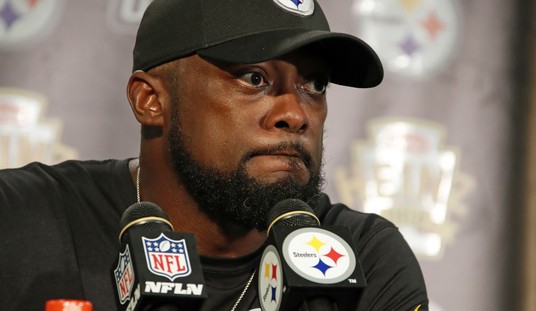I recently argued that the Biden administration is to blame for the significant amount of vaccine hesitancy that is happening right now. The decision to pause the Johnson & Johnson vaccine when six out of nearly seven million doses caused severe blood clots was foolish and caused Americans to question the safety of not just the Johnson & Johnson vaccine, but the Pfizer and Moderna vaccines as well.
But not everyone agrees.
According to David Lazer, a computational social scientist at both Northeastern and Harvard, there is “no evidence that the pause affected vaccine intentions.” Lazer cited the latest report from The COVID States Project, which Lazer is a contributing author.
Did the J&J pause reduce demand for vaccinations, as some have asserted? (cough @NateSilver538 cough)
Our latest https://t.co/R2ssoQmGoP report evaluates this question, based on a large (20k) survey we had in the field the entire month of April. pic.twitter.com/JU8pcPE1wL
— David Lazer (@davidlazer) May 7, 2021
“The scale of the survey, and the rapid change of vax sentiment/status through April give us a pretty good look at dynamics down to the daily granularity. & the pretty clear answer, despite very high awareness, is that the impact of the pause on vax demand was: BUBKES (Yiddish for “nothing”).” Lazer said on Twitter. “What we see is a steady increase in the number of vaccinated people, & a steady decrease in vaccine enthusiastic and hesitant individuals. Vax resistance is quite steady.”
“So: J&J did present a short term supply shock, likely modestly slowing vax rates for a week or two? But the peak shots/day was always going to be in April, as we exhausted the easy to vaccinate enthusiasts,” Lazer contends.
But famed pollster Nate Silver disagrees. “Maybe instead of trying to heroically interpret ambiguous survey data, we should look directly at the variable of interest: how many people are getting vaccinated,” he said on Twitter, before noting that the number of people getting vaccinated “underwent a huge nonlinear plunge timed *exactly* to the J&J pause and has never recovered.”
Maybe instead of trying to heroically interpret ambiguous survey data, we should look directly at the variable of interest: how many people are getting vaccinated. It underwent a huge nonlinear plunge timed *exactly* to the J&J pause and has never recovered (see below). https://t.co/1udbR60z21 pic.twitter.com/pC7OhdVq1h
— Nate Silver (@NateSilver538) May 7, 2021
Lazer acknowledged Silver was correct but attributes the decline to a “temporary supply shock” due to the lack of availability of J&J vaccines.
But, once again, the data proves Lazer wrong. As can be seen in a graph published by the New York Times last week, there’s an unmistakable downward trend of vaccine doses administered of Pfizer and Moderna linked to the J&J pause.
This was predictable but sure looks like no one wants anything to do with the J&J vaccine, even with the pause lifted.https://t.co/KzISbdszCc pic.twitter.com/TEBRpxSYL7
— Nate Silver (@NateSilver538) May 3, 2021
It seems obvious from the graphs that the Johnson & Johnson pause caused a decline in vaccinations that has not recovered despite being lifted. As of last week, approximately 105 million people were fully vaccinated—which is a bit more than 40 percent of the population of vaccination age. So, it seems reasonable to assume that the numbers of vaccinations would level off at this point, not take a sharp decline.
“No one was expecting a drop-off in first doses that looks like El Capitan,” Silver noted. “And everyone would have conceded that the pause was a terrible idea if they’d seen that graph in advance.”
No one was expecting a drop-off in first doses that looks like El Capitan and everyone would have conceded that the pause was a terrible idea if they'd seen that graph in advance.
— Nate Silver (@NateSilver538) May 7, 2021
So, it seems quite reasonable and accurate to say that the Biden administration’s decision to pause the Johnson & Johnson vaccine was a terrible decision… and the Biden administration should accept responsibility for that.










